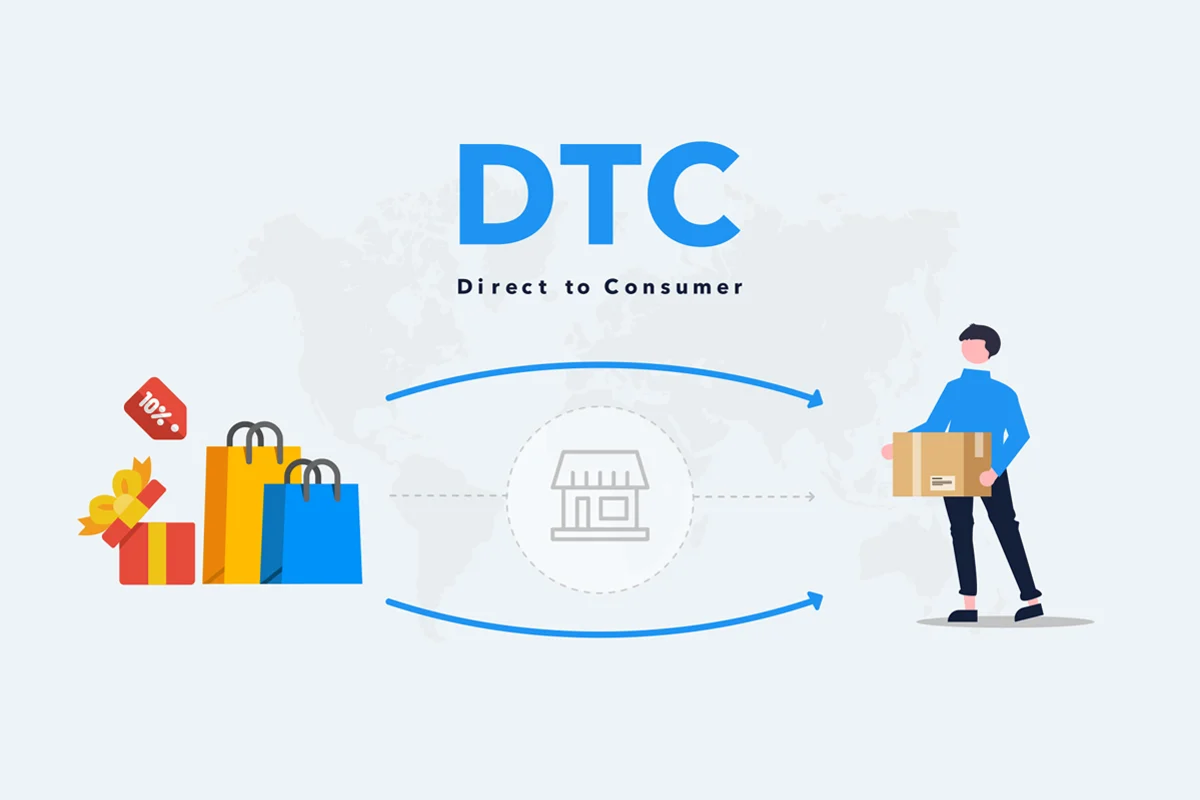The U.S. eCommerce market is soaring, projected to reach $1.26 trillion in sales in 2024, accounting for 16% of total retail purchases. Yet, many U.S. eCommerce managers are tethered to outdated platforms like Magento 1.x, Volusion V1, osCommerce, Zen Cart, and PrestaShop, hemorrhaging revenue, customers, and competitive edge. These legacy systems, once industry leaders, now struggle with sluggish performance, security vulnerabilities, and a lack of modern integrations for channels like TikTok Shop or AI-driven personalization.
In 2025, clinging to these platforms is like trying to win a Formula 1 race in a horse-drawn cart while competitors on Shopify or BigCommerce speed past. This blog examines five outdated platforms dragging down U.S. retailers, detailing why they’re obsolete, how they hurt your business, and why migrating to a modern solution is essential to thrive in a cutthroat market.
Magento 1.x – A Security and Performance Liability
Magento 1.x, once a cornerstone for U.S. retailers, became a liability when official support ended in June 2020. Its outdated framework and lack of updates make it a dangerous choice for businesses competing in a mobile-first, security-conscious landscape.

Why Magento 1.x Is Obsolete
Magento 1.x lacks critical modern features like headless commerce, AI-driven personalization, or integrations with social platforms like Instagram Checkout or TikTok Shop. Its heavy codebase delivers page load times often exceeding 5 seconds, missing the sub-2-second standard that prevents 53% of U.S. mobile users from abandoning sites, per Google’s 2023 data. With no official patches since 2020, it fails 2025’s PCI DSS compliance standards, leaving sites vulnerable to cyberattacks. Over 100,000 stores globally, including thousands in the U.S., faced vulnerabilities post-2020, with 60% reporting breaches or skyrocketing maintenance costs.
- No Modern APIs: Incompatible with tools like Klaviyo or Stripe, limiting personalization and payment options.
- Poor Mobile UX: Non-responsive design drives 70%+ cart abandonment on mobile, which accounts for 55% of U.S. traffic.
- End-of-Life: No updates since 2020, exposing sites to unpatched security flaws.
Impact on U.S. eCommerce Operations
Magento 1.x undermines U.S. retailers’ competitiveness. Its inability to support social commerce—a $50 billion U.S. market in 2023—means missed opportunities on platforms like TikTok Shop, where livestreaming drives 30%+ sales growth. The 2020 Tupperware.com skimming hack, exploiting an unpatched checkout, shows how vulnerabilities erode trust, with 42% of U.S. shoppers shunning brands with poor security, per Statista. Slow performance and rigid architecture also hamper scalability, forcing costly customizations that delay campaigns and frustrate customers expecting seamless omnichannel experiences (demanded by 80% of U.S. shoppers). Retailers like a mid-sized U.S. apparel brand reported losing 15% of mobile sales due to Magento 1.x’s clunky UX before switching to BigCommerce.
The Cost of Staying on Magento 1.x
Maintaining Magento 1.x is a financial black hole. Custom patches to keep it running cost $10,000–$50,000 annually, and security breaches can cost millions, as seen with Tupperware’s hack. Without modern features, retailers lose 20–30% of potential conversions to competitors on Shopify, which powers 29% of U.S. eCommerce sites. The lack of AI personalization alone costs 15% in customer retention, while manual workarounds for missing integrations inflate labor costs. Staying on Magento 1.x risks your brand’s reputation, customer trust, and revenue in a market where speed and security are non-negotiable.
Volusion V1 – Slow, Rigid, and Out of Touch
Volusion V1, still used by some small U.S. retailers, is a relic with outdated architecture that fails to deliver the speed, flexibility, or integrations needed for 2025’s eCommerce demands. Its backend is difficult to customize, making even minor updates a challenge for non-technical teams. Meanwhile, its lack of support for modern commerce channels places retailers at a strategic disadvantage in a highly competitive market.

Why Volusion V1 Falls Short
Volusion V1’s average page load time exceeds 5 seconds, far from the sub-2-second benchmark that prevents 53% of U.S. mobile users from abandoning sites. Its rigid templates lack mobile-first design, often failing Google’s Mobile-Friendly Test, critical when 55% of U.S. traffic is mobile-driven. It also misses native integrations for social commerce (e.g., TikTok Shop) or headless capabilities, making it incompatible with modern tools like Stripe or Amazon Marketplace.
- Sluggish Performance: 5+ second load times drive 53% abandonment rates.
- No Social Commerce: Lacks integrations for a $50 billion U.S. social commerce market.
- Outdated Design: Non-responsive templates alienate mobile shoppers.
How It Hurts U.S. Retailers
Volusion V1’s limitations hit U.S. retailers hard. With 80% of shoppers expecting seamless omnichannel experiences, its inability to integrate with platforms like Instagram Shop or Amazon Marketplace stifles growth. A small U.S. electronics retailer using Volusion V1 reported 20% lower conversion rates than Shopify competitors, who leverage mobile-optimized designs and social tools for 32% revenue gains. Maintenance requires custom coding, inflating costs and delaying updates, while competitors on BigCommerce scale effortlessly with composable architectures. The lack of modern analytics also hinders data-driven decisions, leaving retailers blind to customer trends.
The Price of Sticking with Volusion V1
Volusion V1’s inefficiencies are costly. Slow load times reduce conversions by up to 20%, and transaction fees (up to 2% on Volusion V2) add thousands in expenses for mid-sized stores. Customizations to keep V1 functional cost $5,000–$20,000 annually, diverting funds from marketing or product development. In a market where mobile sales drive 55% of traffic, Volusion V1’s outdated framework ensures lost customers to competitors with faster, more flexible platforms, costing retailers market share in a $1.26 trillion industry.
osCommerce – A Relic of the Past
osCommerce, with its last major update in 2017, powers just 0.1% of U.S. eCommerce sites in 2025, a clear sign of its obsolescence in a market demanding modern features and flexibility. Originally a pioneer in open-source commerce, osCommerce has since fallen behind as the industry shifted toward mobile-first and API-driven ecosystems. With a lack of investment in innovation and a shrinking developer community, the platform now serves more as a cautionary tale than a competitive solution.

Why osCommerce Is No Longer Viable
osCommerce’s stagnant development leaves it without mobile-first design, AI recommendations, or integrations with platforms like Amazon Marketplace or TikTok Shop. Its clunky interface frustrates users, contributing to 70% cart abandonment rates on non-optimized sites. It lacks support for social commerce, a critical channel in a U.S. market projected to reach $68 billion by 2026, and its limited APIs can’t connect with modern tools like Salesforce or Klaviyo.
- No Updates: Last major release in 2017, missing modern APIs and features.
- Clunky UX: Outdated interface drives away customers.
- Limited Integrations: Can’t support social commerce or advanced analytics.
Challenges for U.S. eCommerce Managers
osCommerce’s limitations cripple U.S. retailers. Its poor mobile performance alienates 55% of shoppers, who spend 263 minutes daily on mobile devices. Manual order processing increases labor costs by 10–15%, and lack of analytics hinders data-driven strategies. A U.S. home goods retailer using osCommerce struggled to integrate with Instagram Shop, losing 25% of potential social sales, while Shopify competitors leveraged AI and social tools to boost revenue by 32%. The platform’s rigidity also complicates scaling, forcing retailers to rely on costly custom solutions.
The Hidden Costs of osCommerce
Running osCommerce in 2025 is a losing battle. Maintenance for custom fixes costs $5,000–$15,000 annually, and missed social commerce opportunities cost 30%+ in potential revenue. Security vulnerabilities in unpatched systems risk breaches, costing small businesses $3.86 million on average, per IBM’s 2023 report. Staying on osCommerce means bleeding money and customers to competitors on modern platforms, risking obsolescence in a dynamic market.
Zen Cart – Struggling with Modern Demands
Zen Cart, last significantly updated in 2019, can’t meet the mobile-first, integration-heavy demands of U.S. eCommerce in 2025, leaving retailers at a competitive disadvantage.

Why Zen Cart Is Outdated
Zen Cart’s templates lack mobile responsiveness, failing to deliver sub-2-second load times critical for U.S. shoppers. Its limited APIs restrict integrations with tools like Klaviyo or TikTok Shop, and its outdated codebase can’t support AI personalization. With U.S. adults spending 263 minutes daily on mobile devices, Zen Cart’s clunky UX drives 70% cart abandonment, per Google’s data.
- Non-Responsive Design: Fails Google’s Mobile-Friendly Test, alienating mobile users.
- No Modern Features: Lacks AI or social commerce support.
- Stagnant Development: No major updates since 2019.
Its Impact on U.S. Customer Experience
Zen Cart’s poor mobile performance frustrates U.S. shoppers, 80% of whom demand seamless omnichannel experiences. Unlike Shopify’s AI recommendations, which boost retention by 15–20%, Zen Cart’s lack of personalization reduces loyalty. A U.S. pet supply retailer reported 25% lower conversions on Zen Cart compared to BigCommerce competitors, as outdated navigation and slow load times pushed customers to rivals. The absence of social commerce integrations also limits access to a $50 billion U.S. market, hampering growth.
The Risks of Clinging to Zen Cart
Staying on Zen Cart is costly. Maintenance for custom fixes averages $5,000–$20,000 yearly, and unpatched systems expose retailers to breaches, with 42% of U.S. shoppers avoiding brands with poor security. Missing social commerce and AI tools costs 20–30% in potential sales, while competitors capitalize on trends like voice search and livestreaming, projected to drive $68 billion in U.S. sales by 2026. Zen Cart’s limitations lock retailers into a cycle of inefficiency and lost opportunities.
PrestaShop – Falling Behind Modern Expectations
PrestaShop, while still used by some U.S. retailers, struggles to keep pace with 2025’s eCommerce demands due to its aging architecture and limited support for modern features. Once considered a flexible solution for budget-conscious retailers, its open-source nature now poses more of a burden than a benefit. With fewer U.S.-based developers and slowing community momentum, keeping PrestaShop competitive is becoming increasingly unsustainable.

Why PrestaShop Is Outdated
PrestaShop’s last major update (version 8.0 in 2022) lags behind platforms like Shopify in mobile optimization and integrations. Its templates often require extensive customization for mobile responsiveness, failing to meet the sub-2-second load times U.S. shoppers expect. PrestaShop’s limited API ecosystem restricts integrations with social commerce platforms like TikTok Shop or advanced tools like Klaviyo. Its open-source nature, while flexible, demands frequent manual updates, overwhelming small U.S. retailers with technical debt.
- Subpar Mobile Performance: Templates often fail Google’s Mobile-Friendly Test, driving 70% cart abandonment.
- Weak Integrations: Limited support for social commerce or AI tools.
- High Maintenance: Open-source structure requires costly custom updates.
Its Limitations for U.S. Retailers
PrestaShop’s shortcomings hit U.S. retailers hard. With 55% of traffic from mobile devices, its inconsistent mobile UX frustrates shoppers, reducing conversions by 15–20% compared to Shopify’s 2.5% average. A U.S. fashion retailer using PrestaShop struggled to integrate with Instagram Shop, losing 20% of potential social sales. Its lack of native AI personalization, unlike BigCommerce’s tools, limits customer retention, critical when 84% of U.S. shoppers expect tailored experiences. The platform’s reliance on manual updates also increases labor costs, diverting resources from growth.
The Costs of Staying on PrestaShop
PrestaShop’s maintenance costs are steep, with custom updates averaging $5,000–$25,000 annually for small retailers. Security vulnerabilities in outdated modules risk breaches, costing $3.86 million on average, per IBM. Missing social commerce integrations costs 20–30% in potential revenue, and slow load times drive away mobile shoppers. Staying on PrestaShop means falling behind competitors leveraging modern platforms’ scalability and features.
Why Migrate to Modern Platforms Now?
Migrating to platforms like Shopify or BigCommerce unlocks scalability, security, and customer engagement, positioning U.S. retailers to dominate in 2025. Legacy systems simply can’t match the speed, integration, and innovation that modern platforms provide. With social commerce and AI personalization becoming table stakes, migration is no longer optional—it’s survival. Retailers who modernize now gain the agility to meet shifting customer expectations and capitalize on emerging trends before competitors do.
Benefits of Modern Platforms for U.S. Retailers
Modern platforms deliver features tailored to 2025’s demands. Shopify, with a 29% U.S. market share, offers sub-2-second load times and native social commerce integrations, boosting conversions by 2.5% on average. BigCommerce’s Catalyst storefront enabled Mizuno USA to scale seamlessly, unlike rigid legacy systems. Magento 2.x’s flexible architecture empowers U.S. retailers with robust customization and multi-channel integrations. Benefits include:
- Composability: Integrate tools like Stripe or Klaviyo for streamlined operations.
- Security: Built-in PCI DSS compliance reduces breach risks.
- AI Personalization: Shopify’s AI tools increase retention by 15–20%.
| Feature | Legacy Platforms | Modern Platforms |
|---|---|---|
| Mobile Load Time | 5+ seconds | <2 seconds |
| Social Commerce | Limited/None | Native integrations |
| Annual Maintenance | $5,000–$50,000 | $1,000–$10,000 |
| Security Compliance | Outdated | PCI DSS compliant |
Choosing the Right Platform for Your Business
Select a platform based on your scale and goals. Shopify, powering 4.6 million sites globally, suits small businesses with its 8,000+ apps and ease of use. BigCommerce excels for mid-market retailers, as seen with Molly Mutt’s customizable dog bed store, which saw a 20% sales uplift post-migration. Salesforce Commerce Cloud fits enterprises needing global scalability. Evaluate mobile performance, social commerce support, and costs to ensure alignment with U.S. market trends, like the $68 billion social commerce projection for 2026.
How to Plan a Seamless Migration
Partner with agencies like TechBlocks, as Mizuno USA did, to migrate data, optimize SEO, and test integrations like TikTok Shop or Amazon Marketplace. A phased approach—starting with product catalogs—minimizes downtime. Modern platforms support automation, with 72% of U.S. eCommerce businesses using it for workflows, reducing migration disruptions. Shopify’s ecosystem streamlines transitions, ensuring continuity in sales and customer experience. A U.S. retailer migrating from PrestaShop to BigCommerce reported zero downtime by leveraging automated tools and agency support.
Act Now to Stay Competitive in the U.S. Market
The U.S. eCommerce landscape is unforgiving—competitors on Shopify, serving 700 million buyers in 2023, dominate with AI, social commerce, and mobile optimization. Delaying migration risks falling behind in a market where consumers expect fast, seamless, and personalized shopping experiences. As emerging technologies redefine retail, legacy platforms simply can't keep up with the pace of innovation.
- Lost Revenue: Poor UX and missing integrations cost 20–30% in conversions.
- Security Breaches: Unpatched systems invite fraud, costing $3.86 million on average.
- Market Share Loss: Social commerce, projected at $68 billion by 2026, favors modern platforms.
Next Steps for eCommerce Managers
Take action now to protect your brand, regain lost revenue, and future-proof your operations. The longer you wait, the more ground you lose to agile competitors adopting smarter, faster, and more connected platforms. The good news? Migration is more accessible than ever—and the ROI is immediate when executed strategically.
- Audit Your Platform: Use Google’s Mobile-Friendly Test and check integration gaps (e.g., TikTok Shop compatibility).
- Explore Modern Options: Schedule demos with Shopify or BigCommerce to evaluate features like AI and social integrations.
- Plan Your Migration: Work with an agency to ensure a smooth transition, prioritizing data integrity and SEO.
With 57% of U.S. shoppers buying from international sellers and social commerce driving explosive growth, modern platforms position you to compete globally. Don’t let Magento 1.x, Volusion V1, osCommerce, Zen Cart, or PrestaShop drag you down. Migrate now to secure your place in the $1.26 trillion U.S. eCommerce market of 2025.



